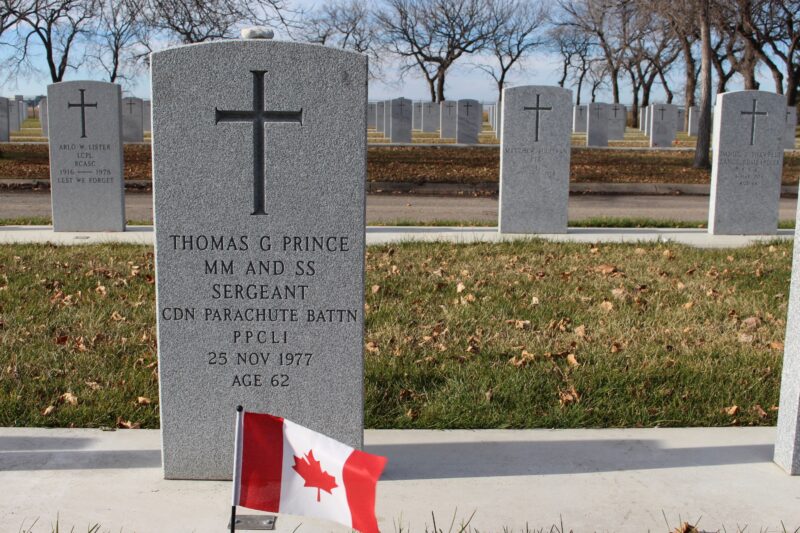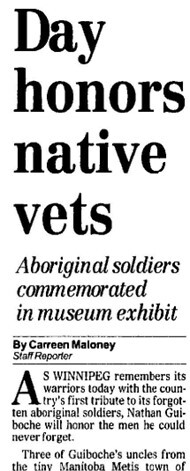Marking Indigenous Veterans Day
November 8, 2024

Sergeant Tommy Prince's military headstone in Brookside Cemetery, Winnipeg.
Indigenous Veterans Day was first observed November 8, 1993. On that day, Susan A. Thompson, Mayor of Winnipeg, signed an official proclamation acknowledging that Indigenous veterans “have not received the recognition due them” and declared November 8, 1993, as “Recognition and Remembrance Day for Aboriginal Veterans.” Today on Indigenous Veterans Day people across Canada commemorate the military service of First Nations, Inuit, and Métis veterans.
Thompson’s signing of this proclamation coincided with an exhibit at The Manitoba Museum of Man and Nature (now The Manitoba Museum) called “Remembering our Warriors.” The exhibit was curated by Sharon McLeod, an Indigenous intern at the museum, and commemorated Indigenous veterans. The exhibit included a special tribute to Sergeant Tommy Prince, one of Canada’s most decorated Indigenous veterans.

A descendant of Chief Peguis, Tommy Prince grew up in Brokenhead Ojibway Nation. He served in the Second World War and the Korean War, earning many distinctions for his acts of bravery. Prince was also dedicated to fighting for Indigenous rights in Canada, advocating for the abolition of the Indian Act and calling for the government of Canada to honour the treaties.
Despite his service to Canada, Prince experienced racism and discrimination throughout his life. He passed away in 1977 at the age of 62 and is buried at the military “Field of Honour” at Brookside Cemetery in Winnipeg. Prince’s grave is marked with a military headstone.
This same cemetery is the focus of a current MITHP research project investigating the burials of Indigenous men, women, and children in Winnipeg cemeteries, many of whom were sent from their homes and families to receive medical care in Winnipeg but passed away while in hospital. The federal government consistently worked to spend as little as possible on these burials and made little effort to returning people to their communities or to mark their graves. For many, their graves are only marked by small, numbered grave identifiers. These markers, situated at the foot of the grave, sink over time, making them difficult to locate.
Just as we honour and respect the veterans who rest at Brookside, it is important to honour the lives, families, and communities of Indigenous people who have passed away within a Canadian federal genocidal system of colonialism. A system that commemorates some humans but forgets others. By tracing what we know about the Indigenous people buried at Brookside, we hope to make it easier for families to find the graves of loved ones who passed away in Winnipeg and to bring attention to city cemeteries as final resting places for many Indigenous people.
